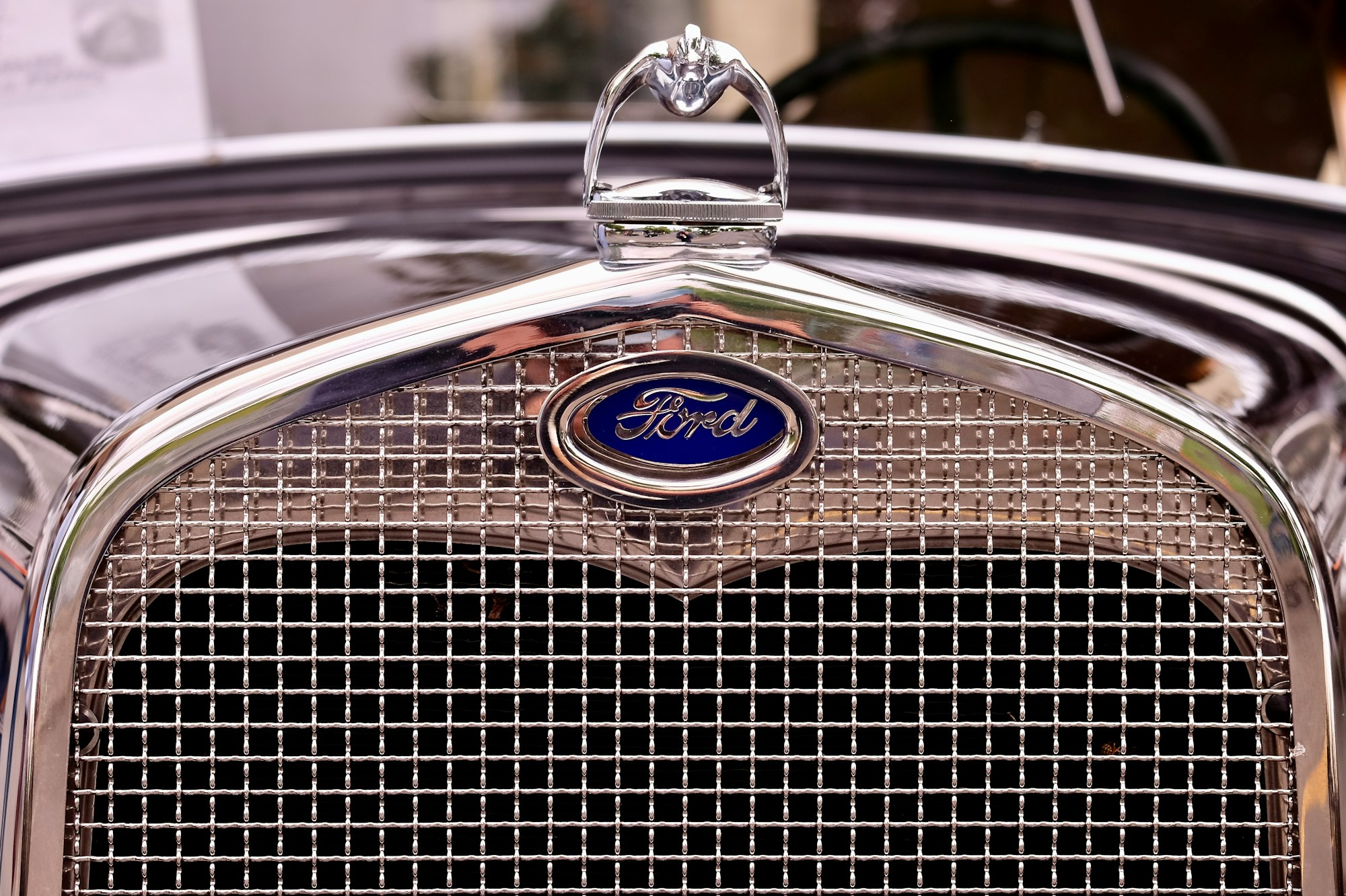Shame, Power, and the Pinto: What I've Learned So Far in Engineering Ethics
Our present moment indulges images of cars in distress.

To the reader: I can't thank you enough for putting up with my ranting. Grateful for the reads and shares of this month's writing. Previously, I wrote on a fragment from a poem of Marilyn Kallet's which stuck with me, on Nietzsche and his conception of fame, and how I would make the most of a humanities class if I had to take one again.
I'm teaching Engineering Ethics this semester, and below is my attempt to reflect on the material we've covered. I think you'll appreciate what I've written.
The institution cannot love you
—Tressie McMillan Cottom
Previous ages committed ostentatious aristocrats or bloody revolutions to paint. Such images do not represent—cannot represent—everything prior generations experienced and endured. All they allow is a peek at a moment to which we bring questions as well as our imagination. Still, it is amazing to briefly glance at a world dominated by rich fabrics. Or be completely horrified at the depiction of soldiers at work.
Our present moment indulges images of cars in distress. Perhaps they reach a pinnacle of sorts when a car crashes out of one skyscraper into the next one.
The most pressing picture currently might be that of a Tesla, a vehicle sold to stop a burning planet, itself on fire. But not too long ago, Ford gave us the Pinto, a car which would literally explode. Trial lawyers have rightly recorded this case for posterity. Here's The American Museum of Tort Law:
In 1972, a Ford Pinto driven by Lilly Gray stalled as she entered a merge lane on a California freeway. Her Pinto was rear-ended by another car traveling about thirty miles per hour. The Pinto's gas tank ruptured, releasing gasoline vapors that quickly spread to the passenger compartment. A spark ignited the mixture, and the Pinto exploded in a ball of fire.
The Ford Pinto is a classic case in Business Ethics, but everyone should know what happened. The Pinto in the paragraph above stalled. It was hit in a collision far from the highest possible speed, causing the gas tank to leak and explode. The car was a comically bad product, but we dare not laugh, as people burned to death because of it.
We also can't laugh because the making and selling of the Pinto entailed a massive abuse of power. Ford intentionally sold a car with a shoddy gas tank which was prone to explode. It wanted a successful entry into the sub-compact market, ruthlessly pursued that goal, and achieved it. More from the trial lawyers:
...Ford's internal "cost-benefit analysis," which places [sic] a dollar value on human life, said it wasn't profitable to make the changes [fixing the gas tank] sooner. Ford's cost-benefit analysis showed it was cheaper to endure lawsuits and settlements than to remedy the Pinto design.
Ford knew about the risk, yet it paid millions to settle damages suits out of court and spent millions more lobbying against safety standards. Pinto was a best-selling subcompact. By 1977, new Pinto models incorporated a few minor alterations necessary to meet federal standards that Ford had managed to hold off for six years.
It is impossible to overstate the gall someone has in doing a study to determine whether it is cheaper to sell a bad product, contribute to the killing and maiming of others, and settle lawsuits rather than provide a simple fix to that product. Which raises the question: What, exactly, is the source of that gall?
Case studies in ethics classes meticulously document incentives and pressures which result in wrongdoing and harm. For example, consider the Challenger disaster. Why did people feel the need to launch the shuttle no matter what? Well, it had been delayed multiple times; other projects were scheduled to use the launchpad; NASA felt competition from other space agencies; Reagan's SOTU would be shortly after the launch, and it might merit a mention. But listing only these sorts of factors does not do justice to what else we see. Also visible are power struggles, talking down to others, anger, malice, contempt, extreme self-righteousness, and a host of other unacceptable behaviors. "Take off your engineering hat and put on your management hat"—this ended a debate over whether flammable gasses would burn through their containment, a debate that occurred the night before the explosion.
We need to think about organizations. How they mix morality and power. How they create immense pressure to obey. How they equate their survival with actual purpose.
We, of course, don't think about organizations. We hold that ideas about morality are individual, only our own. This leads to a trap. When an institution provides a paycheck, gives things to do, makes us feel useful, helps develop our skills, we're not just loyal. We begin seeing the institution as a benefactor. Something, someone, we would be wrong to betray.
Because we don't think about a potential lack of moral purpose—it uses employees! Has worked many into the ground! Hurt plenty of other people!—we substitute hard thinking about where we work with our loyalty.
Where did Ford get the gall to build and sell the Pinto? How did no one stand up to Lee Iacocca as he said "Safety doesn't sell?" It's not as simple as employees muttering to themselves "shut up, get your paycheck, don't get fired, go home." People do sacrifice for causes they believe in. Why didn't they sacrifice so fewer people were burned alive? At some level, they believed in Ford. They believed in NASA.
Your company is fighting every wrongful death suit with every technicality they can find. The willfulness to do this is one of the gravest moral wrongs conceivable. Sure, one has a right to defend oneself. But it's not defending oneself to constantly accuse the dead of driver error or make their families relive the worst day of their lives. Ford was allowed to relentlessly abuse others because it was powerful. So many depended on it, so much it did was considered good. When something is seen as a benefactor, one has no right to complain.
It's a curious shamelessness, when you think about it. "I give you everything, therefore I have the right to do disproportionate harm." Other societies would call it hubris, an assertion of godlike arrogance. Here in the United States, it is a day that ends in -y.
It's a shamelessness not limited to corporations, but I don't really need to say more about that. What I do need to say concerns our image of groups, of public gatherings. I wonder if we intuit how powerful collectives are because we allow some to massively influence our lives. For example, we attend places of worship. We work for companies which must reward shareholders. So we may treat every other group as dangerous while trying not to think too much about a potential problem we brought into our lives. (Obviously, not all religions, not all companies, etc.)
Inasmuch as we live in a deeply abusive culture, we live in a deeply dishonest one. What if we were more honest about groups, about gatherings with airs of authority? I imagine if we knew their limits and kept our boundaries, we'd be overwhelmed by the good which resulted. But as things stand, we're caught in a cycle where too much distrust flows into too much naivete and then back into distrust. Some have told me that the movie where a car crashes from one skyscraper into another is about "mi familia," and I believe them.
References
"Grisham v. Ford Motor Company, 1981," The American Museum of Tort Law. Accessed October 23, 2022. https://www.tortmuseum.org/ford-pinto/
Department of Philosophy and Department of Mechanical Engineering, Texas A&M University. "The Space Shuttle Challenger Disaster," Online Ethics Center for Engineering and Science. Accessed October 23, 2022. https://onlineethics.org/cases/engineering-ethics-cases-texas-am/space-shuttle-challenger-disaster
